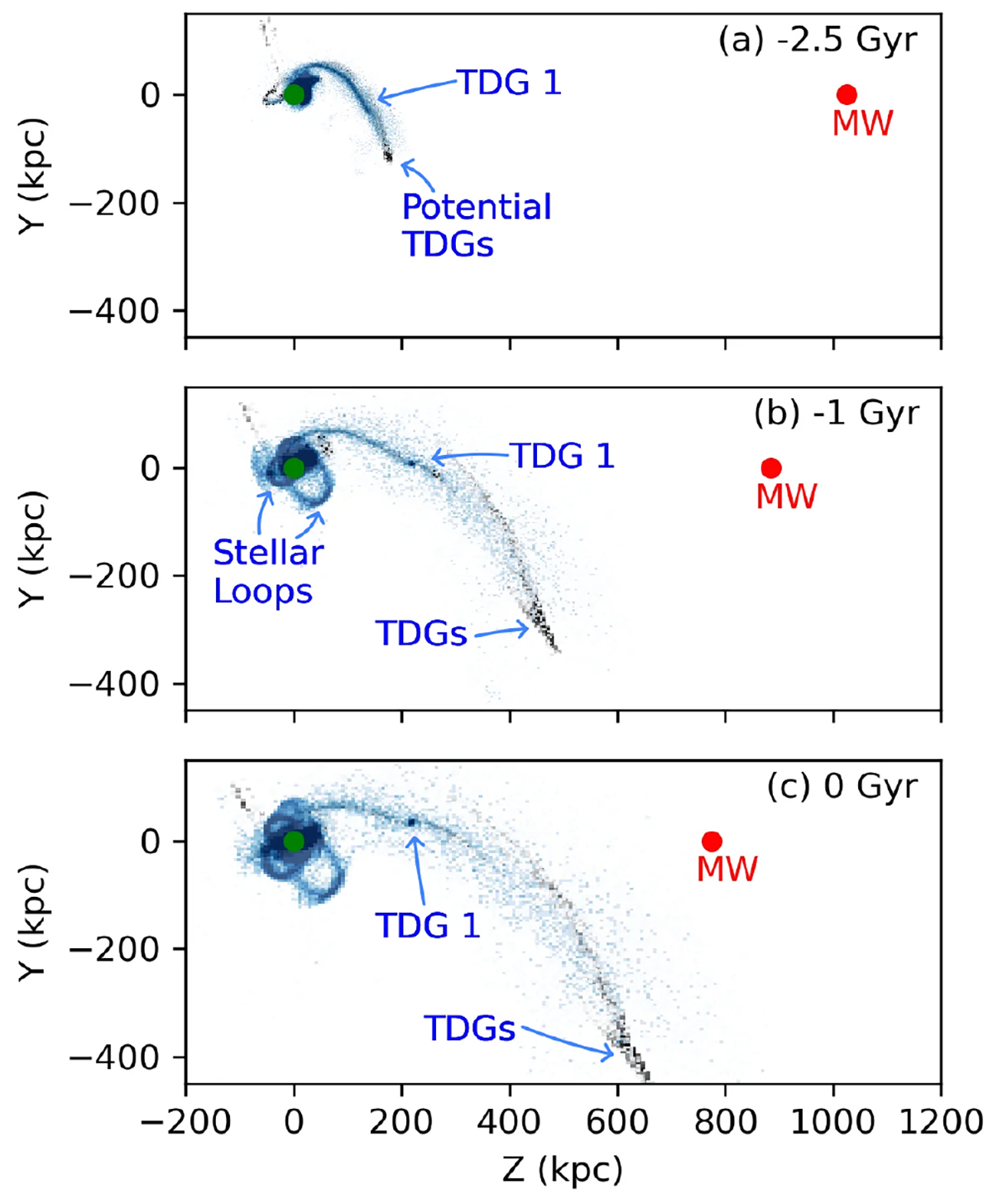Fig. 3.

Download original image
Movement of tidal tail (star particles in blue and gas particles in grey) from M31 merger model 288 towards the MW and formation of TDG within the tail. Panel a: Tidal tail formed during the second passage of M31 merger with some zones of over-density. Panel b: Particles of the tidal tail that are close to the M31 fall back and form stellar loops that ultimately form the GSS. Panels b and c: Distant parts of the tail escape M31, which then expand moving towards the MW. The formation of at least one TDG and potentially a few more in the dense zone can also be identified. In this coordinate system, the M31 centre (green) is fixed at (0, 0, 0), and the MW is at 0 Gyr is on the z-axis. The stars and gas particles are shown in log-normal density to identify the over-dense regions. The position of the MW (red dot) is calculated for a radial approach between the two galaxies taken as the point mass for the MW mass of model B and the M31 mass from Hammer et al. (2025). The MW’s gravitational impact on the particles is not considered.
Current usage metrics show cumulative count of Article Views (full-text article views including HTML views, PDF and ePub downloads, according to the available data) and Abstracts Views on Vision4Press platform.
Data correspond to usage on the plateform after 2015. The current usage metrics is available 48-96 hours after online publication and is updated daily on week days.
Initial download of the metrics may take a while.


